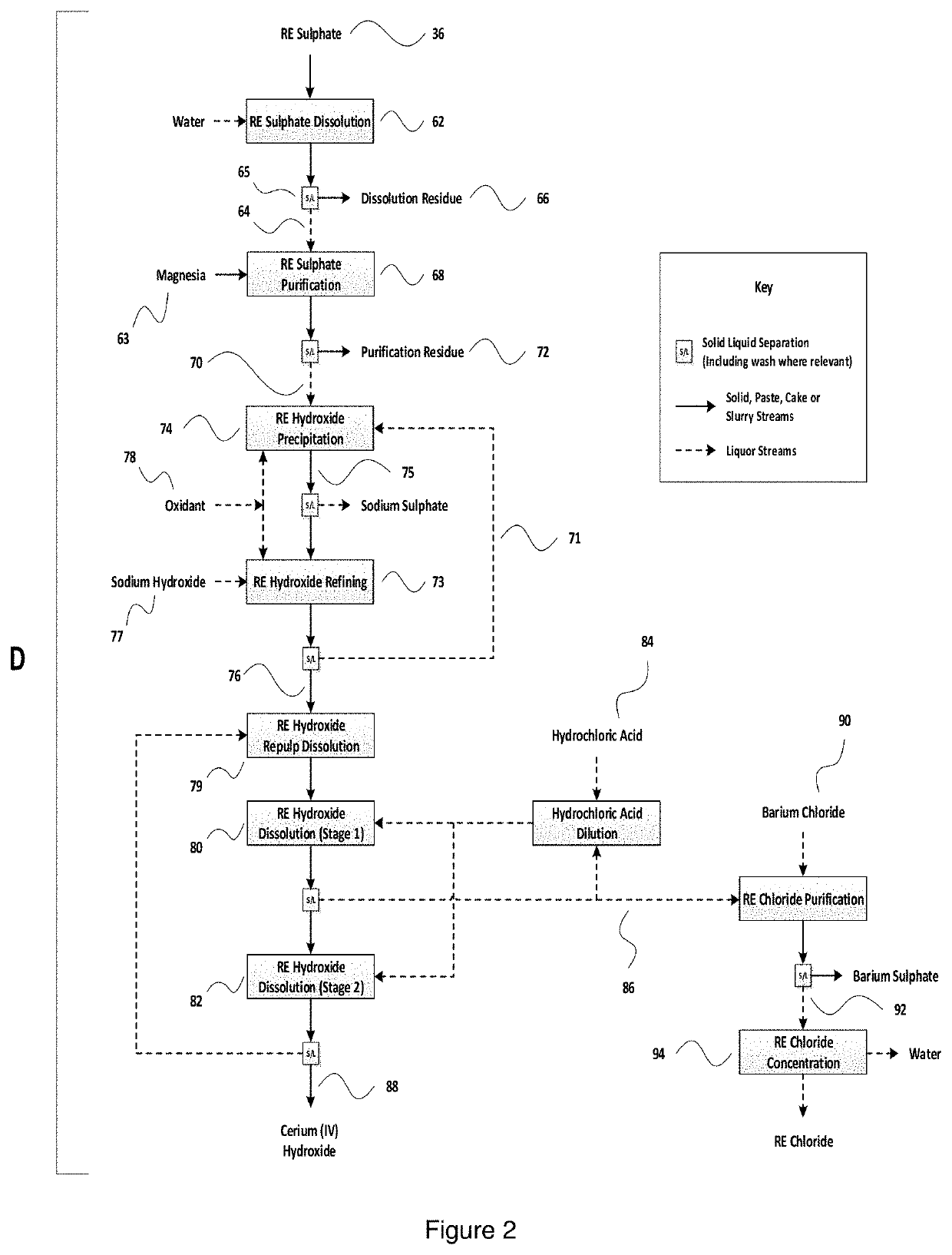Process for the recovery of rare earths
a rare earth element and recovery technology, applied in the field of rare earth element recovery, can solve the problems of substantial neutralisation, inconvenient use, cost prohibitive, etc., and achieve the effect of maximising the precipitation of rare earth elements, minimising co-precipitation, and maximising the precipitation of impurities
- Summary
- Abstract
- Description
- Claims
- Application Information
AI Technical Summary
Benefits of technology
Problems solved by technology
Method used
Image
Examples
Embodiment Construction
>[0050]FIG. 1 is a schematic representation of a flow diagram for the precipitation of rare earth sulphates in accordance with a first preferred embodiment of the method of the present invention, which also illustrates a preferred pre-processing stage for the rare earth rich calcium phosphates, and a preferred associated phosphoric acid regeneration stage; and
[0051]FIG. 2 is a schematic representation of a flow diagram for preferred subsequent rare earth processing stages.
DETAILED DESCRIPTION OF THE FLOW DIAGRAM
[0052]Before providing a more detailed description of a preferred embodiment of the present invention with reference to experimental data, it will be useful to provide some explanation of the flow diagram of FIGS. 1 and 2.
[0053]FIG. 1 shows the precipitation of rare earth sulphates (section A), together with the pre-processing of rare earth rich calcium phosphates (section B) and an associated phosphoric acid regeneration stage (section C). In FIG. 2, there is shown a series ...
PUM
| Property | Measurement | Unit |
|---|---|---|
| Temperature | aaaaa | aaaaa |
| Temperature | aaaaa | aaaaa |
| Temperature | aaaaa | aaaaa |
Abstract
Description
Claims
Application Information
 Login to View More
Login to View More - R&D
- Intellectual Property
- Life Sciences
- Materials
- Tech Scout
- Unparalleled Data Quality
- Higher Quality Content
- 60% Fewer Hallucinations
Browse by: Latest US Patents, China's latest patents, Technical Efficacy Thesaurus, Application Domain, Technology Topic, Popular Technical Reports.
© 2025 PatSnap. All rights reserved.Legal|Privacy policy|Modern Slavery Act Transparency Statement|Sitemap|About US| Contact US: help@patsnap.com


